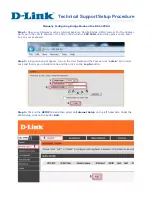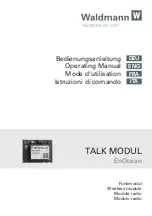
Advanced Configuration
If you are using an 802.11a AP in Europe, keep in mind the following:
•
DFS is not a configurable parameter. It is always enabled and cannot be disabled.
•
You cannot manually select the device’s operating channel; you must let DFS select the channel.
•
You cannot configure the
Auto Channel Select
option. Within the HTTP interface, this option always appears
enabled.
RTS/CTS Medium Reservation
The 802.11 standard supports optional RTS/CTS communication based on packet size. Without RTS/CTS, a sending
radio listens to see if another radio is already using the medium before transmitting a data packet. If the medium is
free, the sending radio transmits its packet. However, there is no guarantee that another radio is not transmitting a
packet at the same time, causing a collision. This typically occurs when there are hidden nodes (clients that can
communicate with the Access Point but are out of range of each other) in very large cells.
When RTS/CTS occurs, the sending radio first transmits a Request to Send (RTS) packet to confirm that the medium
is clear. When the receiving radio successfully receives the RTS packet, it transmits back a Clear to Send (CTS)
packet to the sending radio. When the sending radio receives the CTS packet, it sends the data packet to the receiving
radio. The RTS and CTS packets contain a reservation time to notify other radios (including hidden nodes) that the
medium is in use for a specified period. This helps to minimize collisions. While RTS/CTS adds overhead to the radio
network, it is particularly useful for large packets that take longer to resend after a collision occurs.
RTS/CTS Medium Reservation is an advanced parameter and supports a range between 0 and 2347 bytes. When set
to 2347 (the default setting), the RTS/CTS mechanism is disabled. When set to 0, the RTS/CTS mechanism is used
for all packets. When set to a value between 0 and 2347, the Access Point uses the RTS/CTS mechanism for packets
that are the specified size or greater. You should not need to enable this parameter for most networks unless you
suspect that the wireless cell contains hidden nodes.
Wireless (802.11b)
You can configure and view the following parameters within the
Wireless Interface Configuration
screen for an
802.11b AP:
NOTE
You must reboot the Access Point before any changes to these parameters take effect.
•
Physical Interface Type:
For 802.11b AP, this field reports: “802.11b (DSSS 2.4 GHz).” DSSS stands for Direct
Sequence Spread Spectrum; this is the name for the radio technology used by 802.11b devices.
•
MAC Address:
This is a read-only field that displays the unique MAC (Media Access Control) address for the
Access Point’s wireless interface. The MAC address is assigned at the factory.
•
Regulatory Domain:
Reports the regulatory domain for which the AP is certified. Not all features or channels are
available in all countries. The available regulatory domains include:
— FCC - U.S./Canada, Mexico, and Australia
— ETSI - Most of Europe, including the United Kingdom and some Eastern block countries
— MKK - Japan
— IL - Israel
•
Network Name (SSID):
Enter a Network Name (between 2 and 31 characters long) for the wireless network. You
must configure each wireless client to use this name as well.
•
Auto Channel Select:
The AP scans the area for other Access Points and selects a free or relatively unused
communication channel. This helps prevent interference problems and increases network performance. By default
this feature is enabled; see
for a list of Channels. However, if you are setting up a
Wireless Distribution System (WDS), it must be disabled. See
Wireless Distribution System (WDS)
for more
information.
•
Frequency Channel:
When Auto Channel Select is enabled, this field is read-only and displays the Access Point’s
current operating channel. When Auto Channel Select is disabled, you can specify the Access Point’s operating
channel. If you decide to manually set the unit’s channel, ensure that nearby devices do not use the same
frequency (unless you are setting up a WDS). Available Channels vary based on regulatory domain. See
4-10
















































